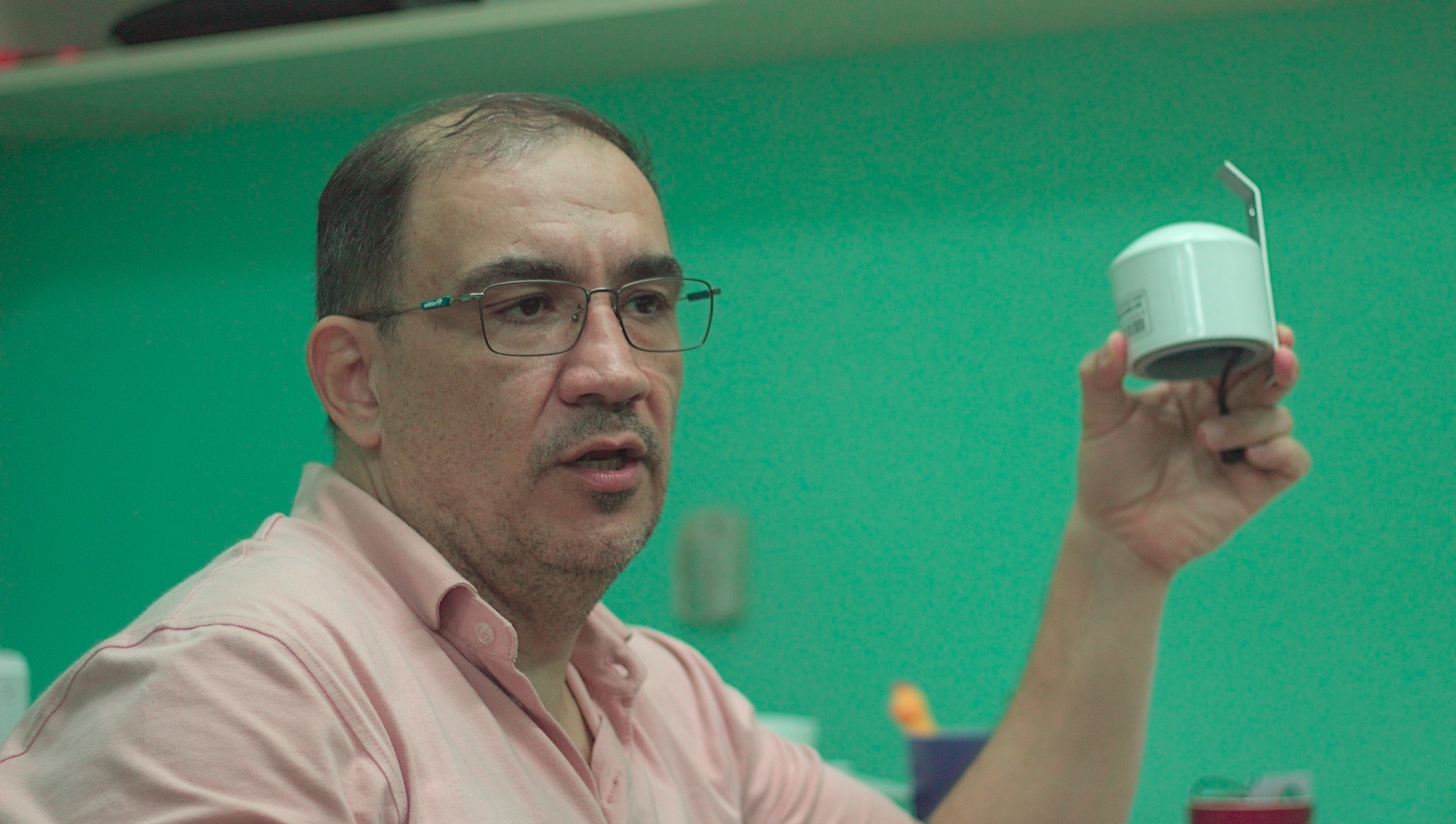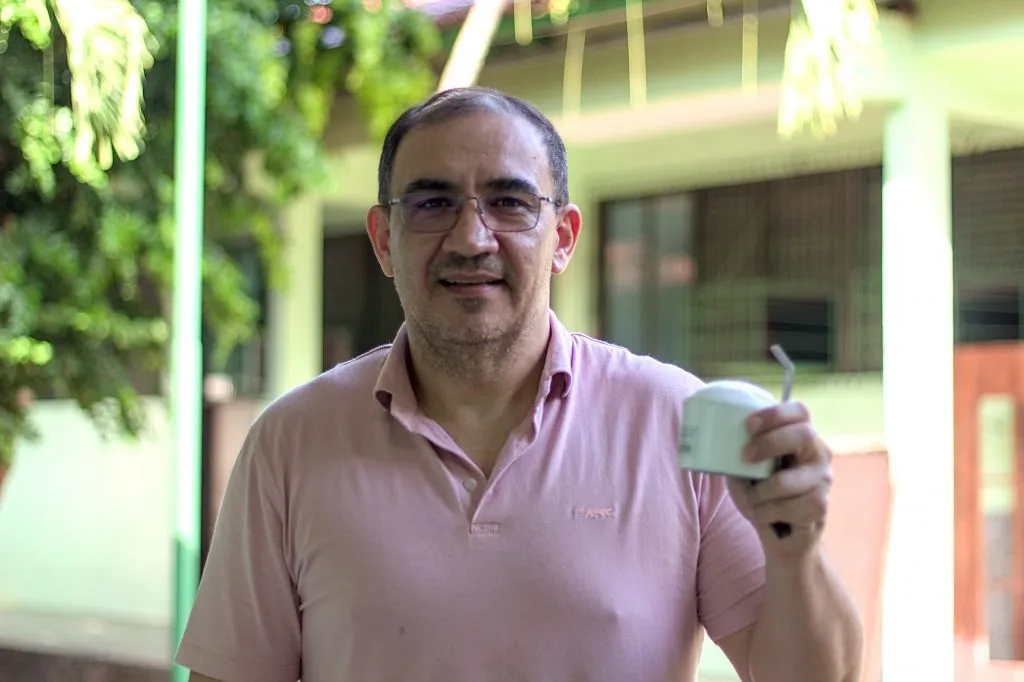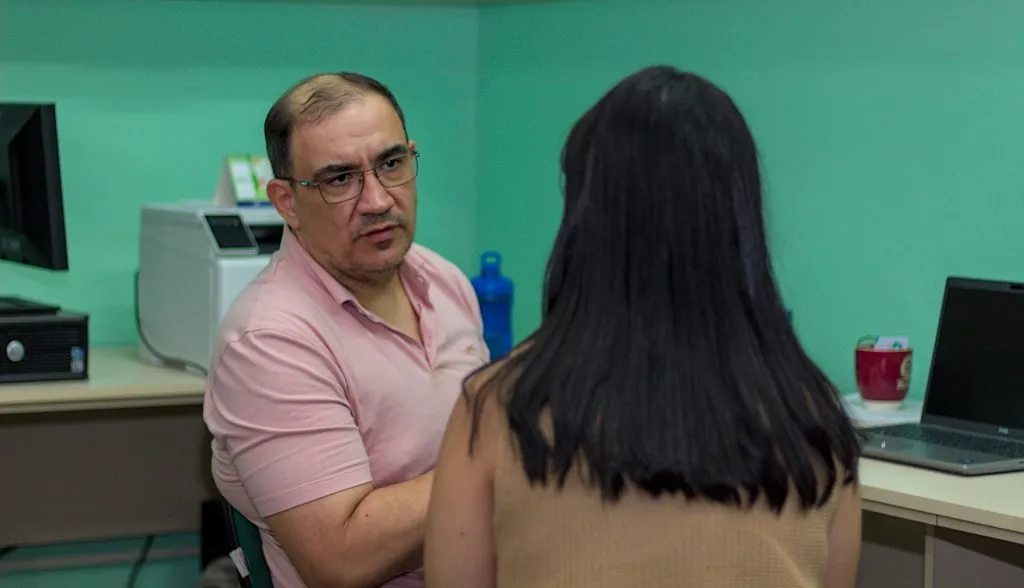Air pollution in Amazonas reduces life expectancy by 1,2 year, warns EducAir coordinator
15 de July de 2024

Carol Veras – From Cenarium
MANAUS (AM) – The quality of the air is reducing the life expectancy of the population of Amazonas. Meteorology researcher and professor at Amazonas State University (UEA) Rodrigo Souza, coordinator of the EducAir project, told CENARIUM that in the region with the highest concentration of forests in Brazil, life expectancy is 1.2 years lower due to the high concentration of microparticulate pollutants found in the air.
The World Health Organization (WHO) recommends that the average annual concentration of fine particulate matter in the air should not exceed 5 µg/m³ (micrograms per cubic meter). In Amazonas, the concentration is currently equivalent to 16 micrograms, three times more than recommended.

“We’re talking about particles that enter your upper airways, reach your lungs and can lead to more serious health conditions”, warns the professor to CENARIUM.
In 2023, during the intense period of fires – from August to November – Manaus was considered the capital with the worst air quality due to the large number of fires that hit Amazonas during the period. The data comes from the World Air Quality Report.
This year, Labclim, UEA’s climate research and prognosis center, is predicting a period of drought as intense as last year. That’s why Souza says: “Oxygen is just as important as water, you can decide not to take a bath in the river, but you can’t stop breathing. Air is non-negotiable”, he says.
The research is part of the EducAir project, organized by Rodrigo Souza. At first, the initiative was born as an extension project funded by the Amazonas State Research Support Foundation (Fapeam), but it soon became a source for monitoring air quality and fires in the Amazon thanks to the equipment and data acquired through information from the National Institute for Space Research (Inpe).

EducAir
With the increase in natural disasters, especially fires in the Brazilian Amazon, the creation of an environmental education program on air quality and environmental monitoring became necessary. EducAir aims to visit public schools in the capital to provide climate data and raise awareness among children and teenagers about the importance of preserving air quality.
The proposal also includes monitoring air quality in Amazonas using devices distributed in various areas of the capital and the countryside. The project has a direct partnership with the Amazonas Public Prosecutor’s Office (MP-AM), where part of the environmental fines are converted into supervision mechanisms. The data can be accessed on the Electronic Environmental Surveillance System (Selva) platform.

The software was developed because of the need to make the data monitored by EducAir public. Used as a basis for the press during the burning periods in 2023, the project relies on physical monitoring, through stations, but also virtual monitoring of air quality, with data from numerical modeling satellites.
The quality indicators vary between “good”, from 0 to 25 micrograms of pollutant particles per cubic meter; “moderate” (25); “bad” (50); “very bad” (75); and “very bad” (125). In 2023, the indicators alternated between very bad and very bad, values well above those recommended by the WHO.

The program has a notification system. Simply download the official Selva app, available for Android and iOS devices, register and the user will be notified of the air quality in the region. “There are three levels of notifications for air quality: bad, very bad and very bad, where we ask people to report fires”, says the EducAir coordinator.
The Municipal Department of the Environment (Sema) and the Amazonas Civil Defense, also in conjunction with the initiative, have acquired sensors to monitor air quality during the dry season planned for the second half of the year. “Sema asked for 90 stations to be distributed in the Metropolitan Region of Manaus”, says the professor. The stations purchased by the MP-AM will be directed to the southern region of the state.
Concern
In 2024, the National Environment Council (CONAMA) aims to update the recommended annual average values for fine particulate matter in the air, previously determined by the National Institute for the Environment and Renewable Natural Resources (IBAMA) and approved by the council itself in 1990.
The new proposal is for the “normal” levels to be 60 micrograms per cubic meter per day. However, this is the value that corresponds to the “bad” indicator in the Selva app and goes against the indications of the WHO itself, which recommends 15 micrograms per day. “In this case, we’re going to give preference to the model established by the WHO”, concludes Souza.

Read also: ‘Labclim’: UEA researcher warns of drought intensity in Amazonas this year

